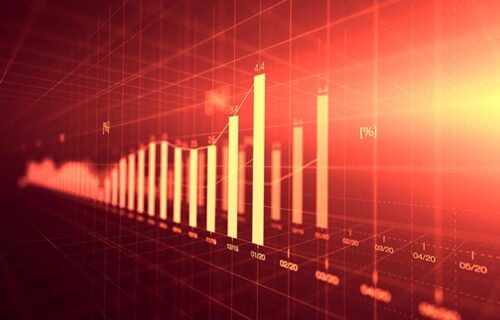Consumer prices in Slovakia rose by 4.4% year-on-year in July, marking the highest inflation rate in the last 19 months, according to data released by the Statistical Office of the Slovak Republic. Month-on-month, prices increased by 0.3% compared with June, with the rise driven primarily by more expensive food, beverages, and seasonal holiday-related services.
The strongest month-on-month price pressures came from food and non-alcoholic beverages, which rose by an average of 0.5%. Milk, cheese, and eggs were up 1.4%, while meat increased by 0.6%. Non-alcoholic beverages climbed 1.7%, with coffee, tea, and cocoa contributing to the growth. Price decreases were recorded for vegetables, down 2.8%, and oils and fats, down 0.4%. Alcoholic beverages and tobacco also contributed significantly to inflation, with a 1.2% rise, while package holidays surged 6.5% as part of the recreation and culture division.
Year-on-year, price increases were recorded across all 12 expenditure divisions. Education registered the sharpest rise at 10%, followed by restaurants and hotels at 9.5% and alcoholic beverages and tobacco at 6.7%. Food and non-alcoholic beverages rose 4.4% compared with July 2024, with oils and fats soaring 14.6% and fruit and dairy products showing double-digit growth. By contrast, meat prices fell 1.6% and vegetables declined 3.7%.
Non-alcoholic beverages have maintained double-digit price growth throughout 2025, reaching 19.2% in July, the highest since May 2023. Coffee, tea, and cocoa recorded their historical maximum with a 20.5% increase, while mineral waters and juices were up 18.3%.
Housing and energy, the largest component of household expenditure, rose by 2.7% year-on-year, driven by higher actual rents but tempered by a slight decline in imputed rent. Furniture and household equipment saw a 3.2% increase, largely due to higher costs for maintenance goods and services.
Core inflation in July stood at 3.6% and net inflation at 3.2%, with both recording 0.4% growth month-on-month. The Statistical Office emphasized that scanner data, now used for food, beverages, and tobacco pricing, has improved the quality and scope of inflation measurement.
In the first seven months of 2025, consumer prices rose by an average of 4% compared to the same period last year. Detailed data on inflation for specific social groups and average consumer prices of selected goods will be published later in August.
The Statistical Office noted that both national consumer price indices (CPI) and harmonized European indices (HICP) continue to provide internationally comparable insights into inflation trends, with methodological updates aimed at reflecting consumer expenditures more accurately.
Source: Statistical Office of the SR
